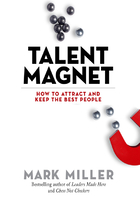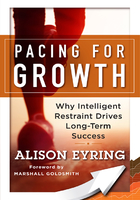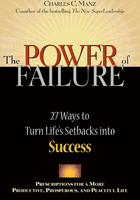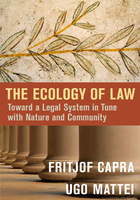Thriving in Today's World
Cynthia Dailey-Hewkin poured herself a hot cup of coffee, sat down at the little table in her kitchen, and opened the morning paper. Her eyes widened, her jaw dropped open when she saw the front-page headline announcing that the Trojan nuclear plant where she worked was going to shut down. She was shocked. Her first thought was, “Oh no! What am I going to do?”
Cynthia says, “The plant closure came at a particularly difficult time in my life. I was going through a divorce after being married twenty-eight years, and my mother was dying of a brain tumor. Now I was losing my job.”[1]
How do you respond to extreme setbacks? People react to life's rough blows in many different ways. Some emotionally explode. They become enraged and flail around. They have emotional tantrums in which they may want to hurt someone. A few become physically violent.
Others do the opposite. They implode. They go numb. They feel so helpless and overwhelmed they can't even try to cope with what has happened.
Some people portray themselves as victims. They blame others for ruining their lives. They spiral downward, mired in unhappy thoughts and feelings. “This isn't fair,” they complain over and over. “Look at what they've done to me now.”
Then, as shown above, there is another group, the people who get through their distress, orient quickly to the new reality, and cope with immediate challenges. They bounce back and often spiral upward, stronger and better than before. In the workplace, they convert what could be a major career loss into finding an even better new career.
Highly resilient people are flexible, adapt to new circumstances quickly, and thrive in constant change. Most importantly, they expect to bounce back and feel confident they will. They have a knack for creating good luck out of circumstances that many others see as bad luck.
In the past, individuals had to learn how to become resilient on their own. Now, for the first time, the new science of resiliency psychology can show you how to become quickly and easily resilient in a way that fits your world. Research into coping, optimism, hardiness, stress-resistance, post-traumatic growth, creativity, emotional intelligence, and the survivor personality has identified the main attributes of resiliency. In the chapters ahead, you will learn how to use knowledge gained from the latest psychology research to develop your unique way of being resilient.
Avoiding the Victim Reaction
Sadly, some people get stuck in the victim/blaming mode when their lives are disrupted. They reject all suggestions on how to cope with what happened. They won't take steps to overcome their difficulties even after the crisis is over. Getting stuck in this frame of mind is like tying a rope around your feet and then trying to run a race—it's a major handicap. Victim thinking keeps people feeling helpless, and by blaming others for their bad situations, they place responsibility on others for making their lives better.
“Reaction” is used here in the sense of a reflex that happens without any conscious thought or feeling of choices.
“Response” indicates that your actions after a threat or setback are guided by conscious choices.
Blaming others for ruining the life you had will block you from bouncing back. Blaming an organization's executives, “the government,” self-serving politicians, administrators who lack emotional intelligence, cheap foreign labor, stock market managers, taxpayers, or any person or group for ruining your life keeps you in a non-resilient victim state in which you do not take resiliency actions.
Your opinion is probably right, of course. As corporate consultant Gary Hamel has observed, “The world is becoming turbulent faster than organizations are becoming resilient.”[2] The chaos of change in today's world is beyond the ability of most organizations to handle well. Some executives and administrators manage their organizations in ways that hamper employee resiliency. Changes in the workplace occur so often now that very few employees have up-to-date job descriptions. And it isn't just frequent, disruptive change that must be handled. Morale suffers when friendships with co-workers are disrupted by reorganization, downsizing, and layoffs. Pride in one's work can be hard to maintain when a system you developed for doing things is tossed out and a new system that doesn't work as well is imposed on you.
When groups of employees make lists of their challenges and difficulties, they often tell me that there may be an impressive mission statement posted in the front lobby, but back where they work, they feel pressured to do more work of better quality in less time, with fewer people, in new ways, using new technology and new methods on a reduced budget— while worrying if their jobs are safe. An older manager in a large retail store said, “It used to be that when you took on a bigger workload, worked through your lunch hour, and took work home, you were trying to get a promotion. Now it means you may be able to keep your job three months longer.”
The shock of an unexpected layoff can be devastating to someone who has enjoyed strong career progress and expects even more career success. Some people feel crushed and remain depressed for a long time. Some may settle for much lower paying jobs and drift into bitterness about how they feel mistreated. A former manager of a manufacturing plant kept telling upper level executives that they shouldn't change anything in “his” plant because everything was working fine and his operation was profitable. When they fired him because he refused to consider making changes they wanted, he did not cope well. Three years later, he still felt angry and bitter as he worked to support his family by driving a taxicab in Chicago—an occupation he felt was beneath him.
Negative emotions such as fear, anger, anxiety, distress, helplessness, and hopelessness decrease your ability to solve the problems you face, and they weaken your resiliency. Constant fears and worries weaken your immune system and increase your vulnerability to illnesses. Taking tranquilizers is not a good long-term solution; neither is using alcohol to sleep at night and stimulants to become energized in the morning.
The situation is serious. At the present time, one out of six Americans uses tranquilizers regularly. According to current US Food and Drug Administration figures, approximately 1.5 million adults are tranquilizer addicts, and tranquilizer misusers currently outnumber abusers of illicit drugs.[3]
A significant benefit from developing resiliency strengths is that you cope so well that you are less likely to need tranquilizers. If the organization you work for is unstable because the executives and administrators can't manage rapid change, it's possible to find ways to handle the pressure and keep bouncing back without anxiety attacks.
The Resiliency Response—Not Easy, But Worth the Effort
Resiliency means being able to bounce back from life developments that may feel totally overwhelming at first. When resilient people have their lives disrupted they handle their feelings in healthy ways. They allow themselves to feel grief, anger, loss, and confusion when hurt and distressed, but they don't let it become a permanent feeling state. An unexpected outcome is that they not only heal, they often bounce back stronger than before. They are examples of Wilhelm Nietzsche's famous statement, “That which does not kill me makes me stronger.”[4]
This is why resilient people usually handle major difficulties easier than others. They expect to rebuild their disrupted lives in a new way that works for them, and the struggle to overcome adversity develops new strengths in them.
Definitions:
Resilience, resilient, and resiliency refer to the ability to
cope well with high levels of ongoing disruptive change;
sustain good health and energy when under constant pressure;
bounce back easily from setbacks;
overcome adversities;
change to a new way of working and living when an old way is no longer possible; and
do all this without acting in dysfunctional or harmful ways.
If you look in an unabridged dictionary, you will see that “resile” is the verb for resilience and “resiling” is the adverb. The words “resile” and “resiling” will be used in this book at times to emphasize that resiliency is something you do, more than something you have.
Resilience is more important than ever in today's world. The volatile and chaotic period we are going through will not end soon. To sustain a good life for yourself and your family, you must be much more resilient than people had to be in the past. People with resiliency skills have a significant advantage over those who feel helpless or react like victims. In this world of life-disrupting, nonstop change
Corporations with highly resilient employees have an advantage over their less resilient competitors.
During downsizing, a resilient worker with a wide range of skills has better chance of being kept on.
When many people are applying for one job, a resilient person has a better chance of being hired.
When your old job skills are no longer needed, you are quick to learn a new way to earn an income.
During economic hardship, resilient people give their families a better chance of pulling through and bouncing back.
Resilient people help their communities get through hard times better.
Resiliency is crucial when there are the added challenges of physical injury or living through a terrorist attack.
A resilient person is best at making difficult situations work well.
Resilient people are less likely to become ill during difficult times.
Resiliency is an essential skill in every job sector—in corporations, small businesses, public agencies, professional services, and the self-employed—especially during times of turmoil. It is important to understand that when you are hit with life-disrupting events, you will never be the same again. You either cope or you crumble; you become better or bitter; you emerge stronger or weaker.
Cynthia Dailey-Hewkin sat and stared out her kitchen window as she absorbed the shock of learning about the closure of the nuclear plant where she worked. “I'd left a difficult, twenty-eight-year marriage,” she says, “to set out on my own with little money. I'd moved out of a nice home into a low-rent apartment that I hated. I'd been through weeks of my mother dying. All things considered, when I compared losing my job to everything else I'd been through, it wasn't the worst. It was one more challenge I had to add to my list.”
At the plant, her co-workers expressed anguish, anger, dismay, and many other feelings. Cynthia listened to them and occasionally offered suggestions on how to cope.
Cynthia avoided self-pity. She thought back to some wise counseling she had received from a chaplain when she had sought help about her troubled marriage. “The chaplain told me to list six things I can do, then pick one and do it.” Now she asked herself, “What can I do?” She outlined a plan to cope with her income loss and listed steps she would take to search for a new job. “I never felt like a victim,” she said, “and never blamed anyone. I told myself, ‘This is just life.’”
The closing of the nuclear plant and the related layoffs occurred in phases extending many months. Cynthia was told she had about eight months before her job would end. She felt compassion for her co-workers worried about future financial difficulties. She asked herself, “What can I do to help?”
“I like to write,” she said, “so I contacted the editor of the Trojan Plant newsletter and offered to write a column with money-saving hints. He was enthusiastic. He gave me my own column, ‘Saving with Cynthia.’ Kind of corny, but it had a nice big heading! People reading it were most appreciative.” Cynthia found herself doing informal career counseling. “I found I had a knack for helping people identify their best skills and find new jobs.”
Cynthia applied for jobs, but without success. She remembers that “it felt scary. We were competing against our coworkers for every job opening announced by Portland General Electric, the parent company. Interviews were often held at the plant, and sometimes there would be lines of people applying for the same job.”
Meanwhile, her helpfulness to her co-workers and “cando” spirit impressed the managers in the human resources department at PGE's corporate headquarters. She said, “They called me and said they wanted me to work in HR! I felt elated! I started my new HR job on the Monday after my job at the Trojan plant ended. I didn't lose one day of work or any benefits, and they paid me more than I'd been earning at Trojan. Things worked out much better than I'd imagined.”
Cynthia remarried several years later and moved with her husband to another city. Her career changes have continued. Today she has her “dream job,” working as an employment specialist in a college career center offering free services to the unemployed. She says, “If it weren't for the layoff at Trojan, none of this would have happened! It helped open the doors for me to a whole new world.”
Notice that Cynthia said she never let herself feel like a victim. Her reaction was to focus on handling the many challenges and help her co-workers as well. She dealt with her situation in her way, and the outcome was even better than she dreamed possible.
Learning to Be Resilient
In the past, individuals had to find ways to be resilient on their own. Now, however, the emerging new science of resiliency psychology has identified what strengths to acquire and how almost anyone can develop them. The resiliency guidelines in this book focus mainly on resiliency in the workplace, but they apply broadly to all aspects of life. By developing resiliency skills and strengths where you work, you then have those same skills available if hit by difficult or trying circumstances in any other area of your life. The most empowering finding in resiliency-psychology research is that you have an inborn predisposition to become resilient and change-proficient. The personal resiliency plan in this book shows you how to
remain calm under pressure, bounce back from setbacks, and avoid resiliency fatigue;
improve your problem-solving skills by using three different methods: analytical, creative, and practical;
keep a playful sense of humor, optimism, and positive feelings during rough times;
break free from inner barriers to resiliency by strengthening your inner “selfs” in healthy ways and overcoming the “good child” handicap;
overcome tendencies to feel like a victim, and stay detached from “victim” reactions in others;
value your complex qualities such as selfish unselfishness, optimistic pessimism, and cooperative nonconformity;
develop your unique way of being resilient by being both self-reliant and socially responsible;
discover how your natural desire to learn is what leads to your life getting better and better;
become skillful at having things work well for you and others;
convert misfortune into good fortune; and
master the art of resiliency.
This book will not tell you what to do or how to act or think. You've had too much of that in your life. People trained to think, feel, and perform as instructed may be prepared for expected difficulties, but not for unexpected or unique difficulties. “Trained” people fear change and don't problem solve quickly in unexpected circumstances, not in the way that resilient people do. Resilient people are those who consciously decide that somehow, some way, they will do the very best they can to survive, cope, and make things turn out well.
Your resiliency strengths come from self-motivated, self-managed efforts to develop resiliency skills. Some people who hear or read about ways to become more resilient mistakenly think that the power lies in the recommended method. They go through the steps in a detached way thinking that the technique will make things better. Then when things don't turn out well, they blame the technique for not working. This is like tossing a can opener at a can of food and then blaming the can opener when the can doesn't open.
While writing this book, I received an e-mail from a man feeling distressed and angry about losing his job. At the end of my reply to him, I sent him a link to my website article, “Guidelines for Handling the Emotional Side of Job Loss and Job Search.”
He responded immediately, “I DID THAT CRAP. IT DID NOT GET ME ANYWHERE!”[5]
Just as a can opener doesn't open cans by itself, reading about resiliency skills doesn't make a person resilient. Resiliency comes from deciding to learn good skills for bouncing back from setbacks and working to have things turn out well. Your intention to develop resiliency methods that work for you is what determines your success or failure.
The Five Levels of Resiliency and Three Barriers to Overcome
A few people are born resilient. Like natural athletes, they have it in them from the start. The rest of us have inborn resiliency potentials that we can access and develop if we choose to. You were born with the ability to learn how to hold up under pressure, adapt quickly to change, bounce back from setbacks, and find ways to have bad situations to turn out well.
Chapter 3 emphasizes the importance of deciding to control much of what is happening in your life, and it lists eight principles and beliefs affecting resiliency. One important principle, true for anyone motivated to increase his or her resiliency, is to understand that we humans can learn new abilities at any age. Developing your resiliency strengths, however, may require overcoming and breaking free from three barriers to resiliency that handicap people who
were raised to be a “good” boy or girl;
are overly socialized to conform and believe that external forces control your life; and
believe the social myth of “stress.”
In the chapters ahead you will learn how to free yourself from these three barriers to resiliency.
The steps for developing your resiliency skills and strengths follow a hierarchy of five levels. Each one builds on the one before. These are to accomplish the following:
Optimize your health and well-being
Develop good problem-solving skills
Develop strong inner gatekeepers
Develop high-level resiliency skills
Discover your talent for serendipity
The first level shows how to create and follow a personal plan for optimizing your health and energy using a simple, practical action plan. In chapter 4, you will learn ways to use what is known about emotional and physical mind-body connections to free yourself from myths about stress. Level One skills include handling your feelings in emotionally competent ways during times of too much change and too many pressures. This well-tested, practical, realistic plan is flexible so that you can adapt it to your unique nature. Psychologists know, for example, that a quiet person needs time alone to recover from distress, while an outgoing person needs to talk with others.
The second level prepares you to focus outward to problem solve challenges. Psychology research shows that problemfocused responses to unexpected difficulties lead to resiliency, while strong emotional reactions in which you feel like a victim lead to helplessness. In chapter 5, you will learn how to strengthen your problem-solving skills using three kinds of human intelligence: analytical, creative, and practical.
The third level focuses inward on three mind-body dimensions that determine resiliency—strong self-esteem, self-confidence, and a positive self-concept based on moral values. Chapter 6 explains how these three core “selfs” function like gatekeepers to your higher-level abilities. If they are weak, you will not be very resilient. If they are strong and healthy, you can access and develop many resiliency strengths.
Resiliency research shows that the biggest barrier to resiliency for some people is their “good child” upbringing. As you will see in chapters 6 and 7, having been raised to be a good boy or girl can prevent you from doing what it takes to be resilient when your world is shaken up. In your personal resiliency plan, you will learn how to overcome inner barriers to resiliency by developing and strengthening the three gatekeepers to an optimal level.
At the fourth level you develop abilities and skills found in highly resilient people. Chapter 7 shows how childlike curiosity and self-managed learning lead to advanced resiliency skills.
Our ancestors knew about the power of hope. Chapter 8 provides new information about optimism, positive thinking, coping skills, and resiliency that can empower you during times of adversity.
Chapter 9 is a stretch for many people. It explains how to gain deep mental and emotional stability by developing a flexibly complex, unique personality. The most resilient people reach a level of development where they gain strength from counterbalanced inner qualities. They are not socially compliant, for example, but act in socially responsible ways.
In chapter 10, you will see that the best way to understand highly resilient people is to observe what happens around them. In a workplace without up-to-date job descriptions, they are more effective than others because they are free to interact with the moment-to-moment action in ways that lead to things working well for everyone. They work less hard than others, however, because they have mastered the art of allowing things to work well.
The fifth level is the highest level of resiliency. People at this level have a major advantage in a world of constant change. They don't fight against disruptive change because they accept new realities quickly. They know that everything in the world happens the way it should. They align rapidly to new realities and allow themselves to influence events so that things turn out well. As shown in chapter 11, highly resilient people can dance and flow with disruptive change because they have many attitudes and perspectives that let them be both involved and detached from the action. Resiliency lets you align quickly to new circumstances and steer the swirling energies to reach good outcomes. A reliable strength at this level is the talent for serendipity—the ability to convert accidents and misfortune into lucky accidents and good fortune.
Stories of survivors of extreme resiliency challenges can be inspiring. Chapter 12 describes how some people not only survive circumstances that overwhelm others, they recover stronger and better. Lance Armstrong, for example, almost died from cancer that had spread to many organs in his body. He had extensive surgery, underwent chemotherapy, survived the cancer, and came back to win the Tour de France bicycle race, year after year. In interviews Armstrong has said, “If I had to choose between getting testicular cancer and winning the Tour de France, I would choose testicular cancer.” He describes his bout with cancer as “a special wake-up call.” The cancer left him scarred physically and emotionally. “But it was an unexpected gift.” He says his recovery ordeal changed him. It awakened him to fully appreciate the blessings of good health, a loving family, and close friends.[6]
Three elements lead to personal effectiveness—you know what has to be done, know how to do it, and feel motivated to do it. At the end of each chapter, you will find suggested Resiliency Development Activities. You will increase the speed and depth of your resiliency development by doing the activities, recording what you learn in a private journal, and discussing what you are learning with others.
The five levels of resiliency described in this book provide you with a comprehensive, personalized system for bouncing back faster and easier and living a longer, healthier, more enjoyable life. This program shows how to use knowledge from the new science of resiliency psychology to learn the art of resiliency. It shows how to benefit from aligning your mind, attitudes, and actions with the reality that our world is a vibrant, dynamic place of unceasing change.
A significant benefit from being self-confident, changeproficient, optimistic, and skilled at making things work well is that you master the process of nonstop change. As described in chapter 13, the pressures of nonstop, disruptive change appear to be motivating a human transformation to a new way of being. Your ability to resile over and over comes from allowing your mind, attitudes, feelings, values, skills, and unique nature to be different in every situation, organized by your purposeful consciousness.
The art of resiliency gives you a powerful advantage in today's world. Your learning will be most useful if you put together your own plan for developing your way of being resilient and don't restrict yourself only to what you read in this book. In the school of life, the responsibility is on the learner, not the teacher.
Before reading further about resiliency, take the resiliency self-assessment, “How Resilient Are You?” in chapter 2. It will give you an overview of the most important resiliency skills and indicate how well you use them now.
Resiliency Development Activities
What differences have you noticed between people who are highly resilient and those who are not very resilient? Make two lists.
Something done with great skill may be described as “an art.” Dozens of books have been written on topics such as The Art of Happiness, The Art of Leadership, The Art of Conversation, The Art of War, and so forth. What does doing anything as “an art” mean to you? What are your thoughts about “the art of resiliency?” What appeals to you about learning resiliency as “an art?”
The chapters ahead have embedded within them an unstated, essential resiliency skill. See if you can identify what it is.
注释:
[1]Cynthia Dailey-Hewkin story, personal interviews.
[2]Hamel, Gary, and Liisa V?likangas. “The Quest for Resilience.” Harvard Business Review, September, 2003, p. 52.
[3]Tranquilizer addiction data from the National Institute on Drug Abuse. Website: www.DrugAbuse.gov/ResearchReports/ (accessed September 27, 2004).
[4]Frankl,Viktor. Man's Search For Meaning (first published by Beacon Press, 1956. Reissued by Washington Square Press, 1985), p. 103.
[5]Job loss e-mail exchange at www.ResiliencyCenter.com, August 18–19, 2004.
[6]Armstrong, Lance. It's Not About the Bike (New York: Berkley Publishing Group, 2001). Also, quotes from broadcast interviews and his website, www.LanceArmstrong.com














